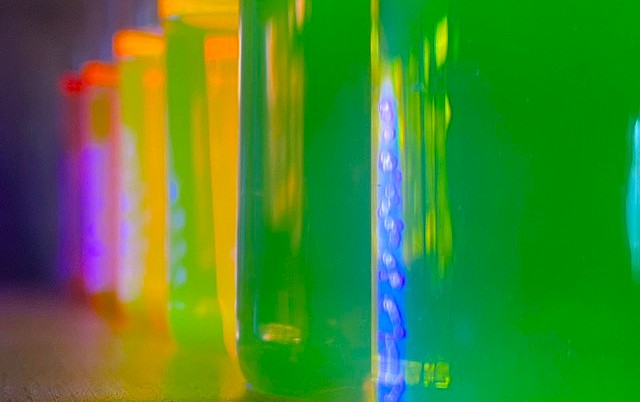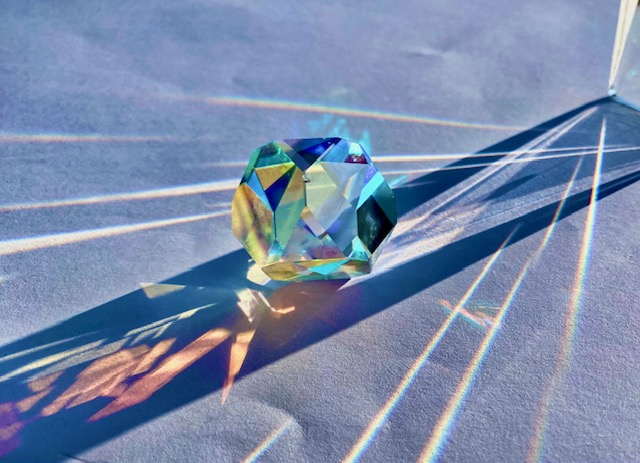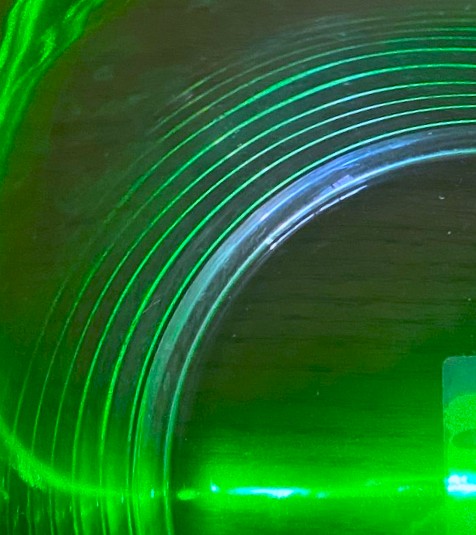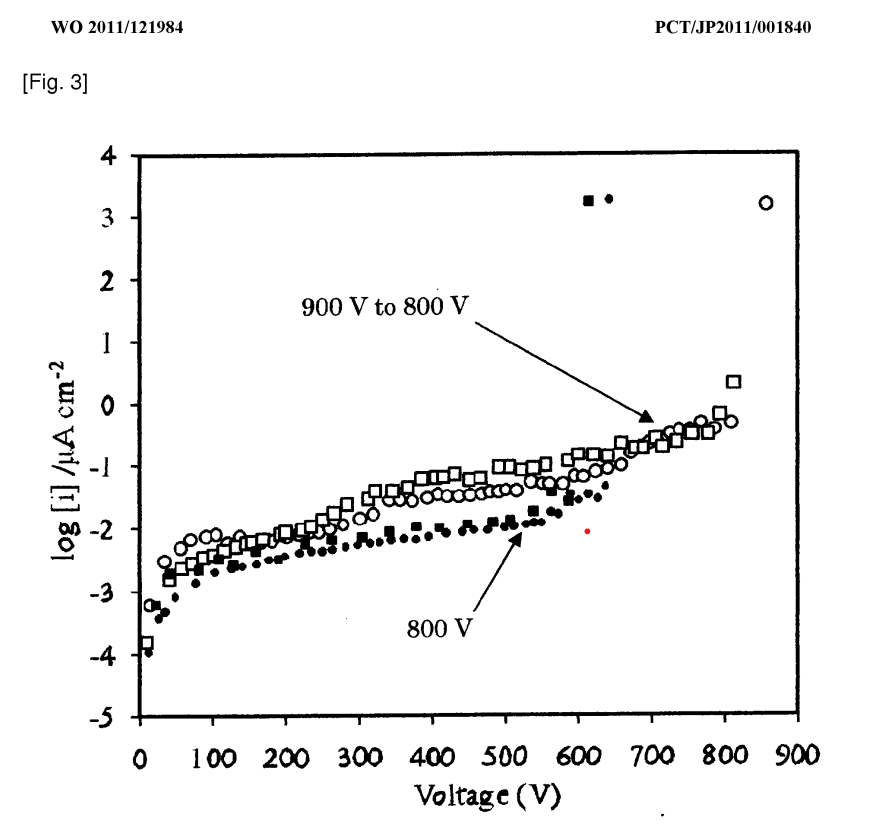
Early years
Teflabs 1996 – 1998 Organic synthesis of fluorescent intracellular indicators
This was my first time working in a lab. I had fun with doing reaction workups for my boss: column chromatography purifications, solvent stripping and product recrystallization. I got to do all sorts of exciting chemistry work and I learned invaluable lab skills I still utilize.
UT Austin 1998 – 2000 Mass spectrometry of complex biological mixtures
My undergraduate research was centered around electrochemistry, interestingly. My advisor was a pioneer in proteomics and specialized in coupling the capillary electrophoresis separation method to electrospray ionization mass spectrometry for identification of biological molecules including hemoglobin and carbonic anhydrase in human red blood cells.
The study thrilled me, a mix of intense applied physical chemistry and emerging fields in bioanalytical chemistry—and moreover I delighted in the day to day work with polyimide-coated glass capillaries, high voltage ionization sources and instruments worth a fortune.
It was the most important job that I’ve ever had. I was fortunate to get a lead-author publication for this work that was featured on the cover of Analytical Chemistry [LINK].
I took my BSc in chemistry from the University of Texas at Austin in 2000.

UCLA 2000 – 2004 Laser spectroscopy of conjugated polymers
My graduate research went into the field of polymer semiconductors and their optical properties. I spent a lot of time working on glowing polymers in a nitrogen-filled glove box. [You know it. It’s where Homer works with his hands through the big plastic gloves handling some chemicals behind a glass barrier.]
I worked specifically on polymer LEDs and photovoltaic devices. We formulated a DMSO-soluble poly-p-phenylene vinylene polymer with a chelating fullerene derivative for a donor-acceptor photovoltaic couple. My hands-on experience in this work built successively in stages from a base of polymer chemistry formulations and photophysics—the laser induced fluorescence, the polymer film exciton-exciton dynamics [LINK]—through a stage of building the infrastructure for devices—sandwiching the semiconductor polymer films between indium tin oxide and calcium metal (!) electrodes—to a final stage of device fabrication and testing under solar simulation. It was a wide-ranging project and it kept me occupied.
I chatted over chemistry, science and mathematics, and some very abstract concepts about the new science of nanotechnology with my wonderful fellow graduate students and postdocs and professors.
I obtained my Master’s of Science degree in chemistry from UCLA in 2004.

Intelligent Optical Systems 2004 – 2005 Optical fiber cladding-based chemical sensors
This brief stint in polymer formulations was based around a cool principle of gas detection. We made fiber optic cables with a special chemical recipe in the cladding—the low refractive index coating around the high refractive index core which sustains the internal reflection and waveguiding.
The chemical recipe was specific for a target gas (sarin and chlorine among others); one chemical would react with the gas, and the product of that reaction would cause a color change in the fiber optic coating. The color shift is registered by an optoelectronic monitoring system, and an alarm is triggered.
In this work I interfaced with clients for the first time. Prior, I had only worked in academic labs or doing synthesis workups. Our clients were grant agencies and I was involved in high level meetings with grant officers of the US federal government. I was in a low-level position, but I absorbed as much as I could in this fast-moving tech startup.
Chemi-con Labs 2007 – 2011 Aluminum anodizing, polymer electrochemical capacitors

This job marked my introduction to electrochemistry at a deeper level. I worked with specialists in electrochemistry and electron microscopy to improve conducting polymer-based electrochemical capacitor technology from only lower voltage applications (8 V or so) to much higher voltage ranges (more than 500 V). This was the subject of my first awarded patent. [LINK]
I received the 2010 MoVE Most Valuabe Engineer award from Nippon Chemi-Con, the parent company in Japan, at a lovely ceremony in their research headquarters in Japan, presented by the president of NCC. It was a very great honor, quite moving.
I learned the nuts and bolts of electrochemistry: current voltage properties of cells, electrode fabrication and surface finishing, anodizing and electrochemical impedance spectroscopy. I worked with reference electrodes, three electrode potentiostat systems and glass electrodes extensively for the first time.
In addition to these many tangible research skills and laboratory techniques, it was in this job I first developed a truer understanding of research science. My appreciation deepened for the process analytical thinking, the meaning of experiments and logical reasoning based on empirical facts as more than the process of carrying out scientific work under direction.
In this job I was boldly challenged to relearn my approach to scientific research. I had been guilty of trying to impose my theories which weren’t quite correct onto real chemical systems; and I struggled to move forward. A great coworker sat me down and said these results you keep getting are empirical facts. You must reevaluate your hypothesis. It must be consistent with your experimental results, or else your hypothesis must be set aside.
It was a difficult lesson to learn, but it was very liberating. I would distill the lesson to this: before you set about any experiment you must consider the possible results, A or B for example. For the experiment to be meaningful, you must be able to articulate to yourself what it means to obtain result A and what it means to obtain result B. This is an essential exercise as part of any experimental planning, though I find it is often overlooked. It requires thought experimenting, and it’s tricky. Furthermore, it may seem too self-evident to bother with stating. The trap there is we reflexively go into testing mode, using resources and taking up our attention, without quite knowing precisely how this test contributes to the project as a whole.
Recent past
I’m in the process of writing this section. Please check back soon to learn the recent past of your chemist consultant. Thank you for reading about my early career. Please contact me and let me know what else you’re interested in knowing about my R&D experience.
0 Comments